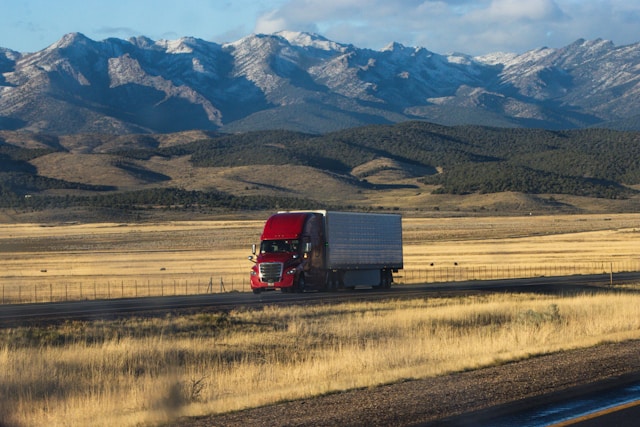Trucking may not grab headlines, but it’s the circulatory system of the American economy. Nearly 72% of all freight in the U.S. moves by truck, according to the American Trucking Associations. From groceries to gasoline, furniture to pharmaceuticals, few industries operate without it.
This post examines the benefits of trucking, the growing dangers on today’s roads, how the industry has evolved over the last half-century, and what the future may hold for this critical — and risky — profession.
The Benefits of Trucking
Modern commerce would grind to a halt without trucks. Unlike railways or shipping ports, trucking offers unmatched flexibility and reach, delivering directly to businesses and consumers anywhere roads exist. As noted by the U.S. Department of Transportation, the ability to move freight quickly and efficiently allows companies to keep inventories lean, respond to demand changes in real time, and reduce storage costs.
Trucking is also a major economic engine. The industry employs over 8 million people nationwide — from drivers and dispatchers to mechanics and warehouse workers. Beyond the direct workforce, it supports fuel stations, logistics software firms, rest stops, and manufacturing plants.
Another advantage lies in speed and responsiveness. While rail and sea remain cheaper per mile for bulk freight, trucks dominate shorter routes and “last-mile” deliveries. That versatility keeps supply chains running and store shelves stocked.
The Dangers of Trucking
The same system that powers the economy also presents sobering risks. According to the National Highway Traffic Safety Administration, more than 5,900 people were killed in crashes involving large trucks in 2022 — the highest number in decades.
Truck drivers face demanding schedules, fatigue, and long hours behind the wheel. Studies by the Centers for Disease Control and Prevention show elevated rates of obesity, heart disease, and depression among long-haul drivers, often linked to isolation and poor access to healthy food or exercise.
There’s also the issue of infrastructure stress. A single fully loaded tractor-trailer can cause pavement damage equivalent to thousands of cars, according to the Federal Highway Administration. Meanwhile, the Environmental Protection Agency warns that diesel trucks contribute roughly 25% of U.S. transportation greenhouse gases despite making up a small fraction of vehicles.
The industry is also heavily regulated, with rules covering driver hours, load weights, emissions, and vehicle maintenance. Yet violations — whether from companies pushing unsafe schedules or drivers exceeding their limits — continue to contribute to catastrophic crashes.
How Trucking Has Changed Over the Last 50 Years
The trucking industry of the 1970s looked very different from today’s connected, data-driven network. The Motor Carrier Act of 1980 transformed U.S. trucking by deregulating routes and pricing, ushering in fierce competition and an explosion of smaller carriers (Congressional Research Service).
Technological advances have redefined safety and efficiency. Trucks now rely on electronic logging devices (ELDs), GPS tracking, and telematics systems to monitor routes and compliance. According to the Federal Motor Carrier Safety Administration, these systems have significantly reduced falsified logbooks and improved enforcement of driver fatigue limits.
Environmental policies have also forced change. The EPA’s SmartWay program promotes fuel-efficient engines and aerodynamic truck designs, helping reduce emissions while saving carriers money.
Even consumer habits have reshaped the landscape. With the rise of e-commerce, trucks now handle unprecedented volumes of small-package, time-sensitive deliveries. The pandemic further accelerated this shift, pushing trucking into a central logistical role for both businesses and households.
Where Trucking Is Headed
The next 50 years could transform trucking even more dramatically. Automation, sustainability, and data are the dominant trends.
Pilot programs from companies like Aurora Innovation are testing autonomous long-haul trucks, promising fewer crashes and lower costs. However, the Insurance Institute for Highway Safety cautions that automation won’t eliminate human error — especially when humans and machines share the same highways.
Sustainability is another frontier. The EPA’s Clean Trucks Plan aims to phase in stricter emissions rules through 2030, and manufacturers like Tesla and Volvo are rolling out electric semis with reduced operating costs and noise.
Meanwhile, data analytics are reshaping logistics. Fleets use predictive maintenance software to prevent breakdowns, and “platooning” technology lets trucks travel close together to save fuel. These innovations could make freight transport both cleaner and safer — but also bring new questions about cybersecurity, liability, and workforce impact.
Why This Matters to Everyday Drivers
Every consumer relies on trucks — yet every driver also shares the road with them. Understanding the pressures, economics, and limitations of the trucking industry is key to safer highways and smarter regulation.
For policymakers, it’s a balancing act between encouraging economic growth and protecting public safety. For trucking companies, it’s about maintaining compliance without burning out their workforce. And for families affected by devastating truck collisions, it’s about accountability and justice.
The Long Haul Ahead: Progress, Pressure, and Protection
Trucking remains one of the most vital — and dangerous — arteries of the modern economy. Its benefits are clear: flexibility, speed, and economic reach. But the risks are equally real: fatigue, infrastructure wear, and the sheer destructive power of a fully loaded rig gone wrong.
As automation and environmental standards reshape the industry, new opportunities and new liabilities will emerge. For those impacted by truck crashes, navigating that complexity requires experienced guidance. If you or someone you love has been injured in a trucking collision, it’s wise to consult an experienced truck accident attorney, like The Tennessee Sledgehammer, who understands both federal transportation law and the evolving realities of the road.






